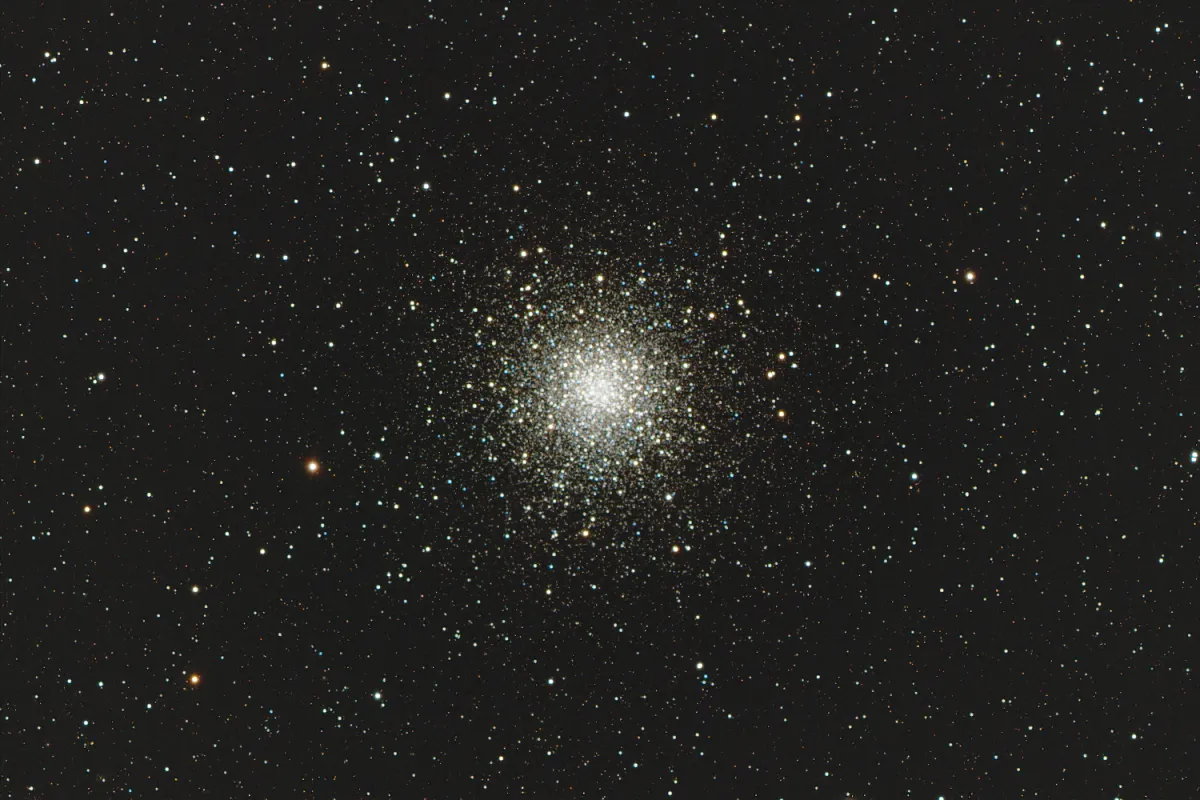Globular Cluster Messier 10

History
The globular cluster Messier 10 was discovered by Charles Messier on 29 May 1764. He wrote: «Nebula without a star, in the belt of the serpent-bearer, next to the 30th star of this constellation, sixth magnitude after Flamsteed. This nebula is beautiful and round; it was difficult to see with an ordinary telescope of three feet [focal length].» [281]
About two decades later Sir William Herschel observed the objects found Messier and recognized the true nature of many of these «nebulae». He wrote: «The excellent collection of nebulae and clusters of stars which has lately been given in the Connoissance des Temps for 1783 and 1784, leads me next to a subject which, indeed, must open a view of the heavens. As soon as the first of these volumes came to my hands, I applied my former 20-feet reflector of 12 inches aperture to them; and saw, with the greatest pleasure, that most of the nebulae, which I had an opportunity of examining in proper situations, yielded to the force of light and power, and were resolved into stars. For instance the 2d, 5, 6, 10, 12, 13, 14, 15, 16, 19, 22, 24, 28, 30, 31, 37, 51, 52, 53, 55, 56, 62, 65, 66, 67, 71, 72, 74, 92, all which are said to be nebulae without stars, have either plainly appeared to be noting but stars, or at least to contain stars, and to shew every other indication of consisting of them entirely.» [27]
Physical Properties
M 10 forms an interesting pair with its neighbor Messier 12. According to distance estimates, M 10, at 16'000 to 22'000 light years, is closer than the large globular cluster Messier 13 in the constellation Hercules. The integrated spectral type of M 10 is given as G0. The radial speed of approx. 72 km/s is relatively low compared to other globular clusters. [4]
| Designation | NGC 6254 |
| Type | GCL (VII) |
| Right Ascension (J2000.0) | 16h 57m 08.9s |
| Declination (J2000.0) | -04° 05' 56" |
| Diameter | 20 arcmin |
| Visual magnitude | 6.6 mag |
| Metric Distance | 4.400 kpc |
| Dreyer Description | ! globular, B, vL, R, gvmbM, rrr, st 10…15 |
| Identification, Remarks | h 1972=3659; GC 4256; M 10; GCL 49 |
Finder Chart
The globular cluster Messier 10 is located in the constellation Ophiuchus (Serpent Bearer) near the 4.82 mag star 30 Ophiuchi. It can best be observed in the months of February to November.
Visual Observation
400 mm Aperture: M 10 appears less dense in the core region than the globular cluster Messier 12, which is just under 4° away. A striking feature is an elongated S-shaped chain of stars through the centre far into the outer region. In the Ethos 13 mm the view was most enjoyable. — 400 mm f/4.5 Taurus Dobsonian, Ahornalp, SQM 21.2, 30. 5. 2025, Bernd Nies
